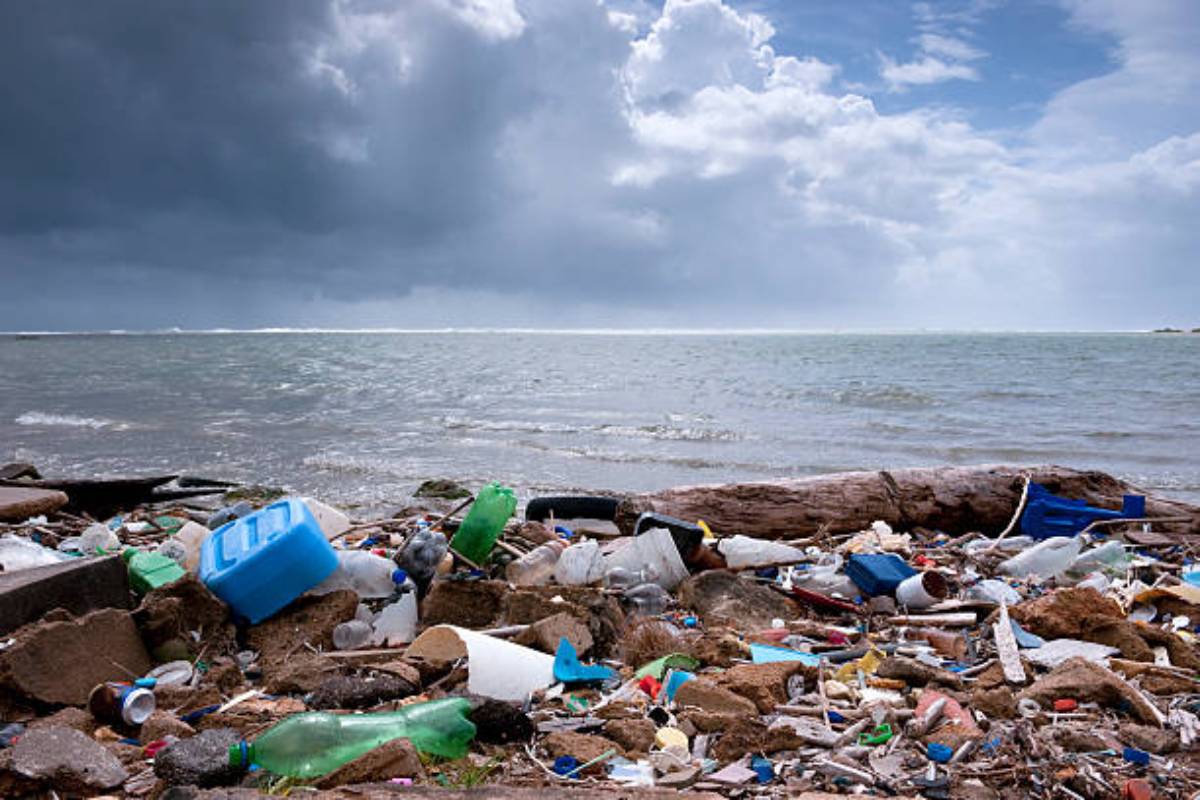No respite for Delhiites from toxic air as AQI remains ‘very poor’
According to the Central Pollution Control Board (CPCB), Delhi's average AQI on Thursday was 377 at 4 pm, while several places recorded air quality in the 'severe' zone.
The beloved Raikhor fish (Cirrhina reba), a local culinary treasure, has become a rare sight in the Atreyee river this monsoon season, alarming residents and environmentalists alike.

Water pollution (Photo:SNS)
The beloved Raikhor fish (Cirrhina reba), a local culinary treasure, has become a rare sight in the Atreyee river this monsoon season, alarming residents and environmentalists alike. Traditionally abundant during this period, the near-absence of Raikhor is now being attributed to severe river pollution, a situation that has caught the urgent attention of the District Fisheries Department.
The Atreyee river, which originates in Bangladesh and meanders through South Dinajpur district, covers 58 kilometres from Kumarganj to Balurghat. This waterway is the source of 40 per cent of the district’s fish, with the rest sourced from ponds, canals, and external suppliers. Renowned for its unique flavour, Raikhor fish usually commands Rs. 500-600 per kilogram in local markets, with prices typically dropping to Rs. 300-400 per kilogram during the monsoon, making it a household staple. This season, however, Raikhor fish is nearly absent from the markets.
The decline of this species has led to widespread concern among environmental groups and residents who rely on the river for their livelihoods. Local fisherman Bheem Halder lamented: “Five and six-inch-sized Raikhor fish are unmatched, but this year, the river nets are empty.” Pollution has been identified as a significant factor behind the disappearance of Raikhor. Local environmental activists point to several causes ~ the construction of a cross-rubber dam in Mohanpur, Bangladesh, which has reduced water levels, and the continuous dumping of city waste into the river.
Advertisement
These issues have led to a significant drop in water quality, hindering fish reproduction and contributing to their scarcity. The cross-dam in the Chakbhavani area at Balurghat, with its low height, exacerbates the problem. While the northern end retains water, the southern end remains dry, disrupting the river’s natural flow. Additionally, the use of mosquito nets for fishing, illegal blocking of the riverbed, and chemical pollution from carbide fishing further harm the aquatic ecosystem. Abhijit Sarkar, the District Fisheries Officer, emphasised the impact of weather on fish breeding. “Drizzly rain and cloudy weather are favourable for fish breeding. However, despite having such conditions, the fish population is declining due to pollution,” he explained.
Plastic waste from urban areas flows into the river, degrading the habitat and preventing fish from reproducing. The Fisheries Department has called for immediate action to address pollution. Mr Sarkar suggested adopting measures similar to the Ganga project, where wastewater is treated before being discharged into the river. He urged local authorities and the administration to pri o ritise pollution prevention to protect the river and its fish. Residents and environmentalists agree that preserving the Atreyee river is crucial. The decline of Raikhor fish affects not only the local economy but also the ecosystem. As much as forest conservation is emphasised, attention must also be given to aquatic ecosystems. The disappearance of Raikhor is a stark reminder of the urgent need to protect these vital resources. In the past, Raikhor fish were so plentiful that households would host Raikhor festivals, serving elaborate meals featuring the fish.
This cultural tradition is now at risk. The scarcity of Raikhor has caused prices to soar, with smaller fish fetching up to Rs. 400-500 per kilogram. Despite these high prices, the fish disappear quickly from the markets, highlighting their demand and limited supply. As the monsoon progresses, locals hope for the return of Raikhor. Some reports suggest that Raikhor may start arriving from Bangladesh’s Chalan Bill, raising expectations of a larger catch. However, without addressing the root causes of pollution and habitat destruction, the long-term outlook for Raikhor and other fish species in the Atreyee river remains bleak.
Advertisement